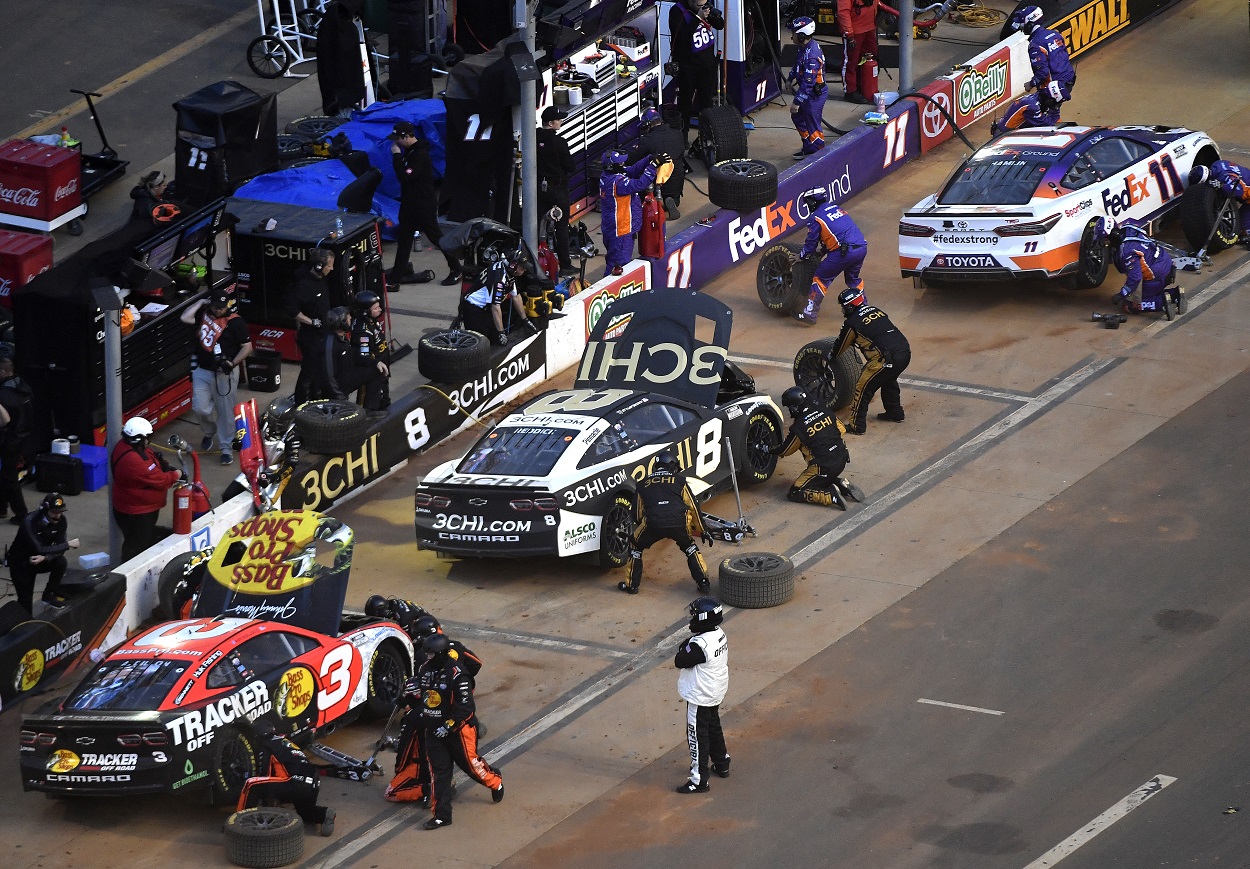NASCAR
NASCAR’s Bristol Rule Could Pave the Way for Others Many Fans Desperately Want

NASCAR narrowly avoided what likely would have been one of the more significant controversies of the season as rain began to fall Sunday night during the dirt race at Bristol Motor Speedway.
The event was past the halfway point required for it to be an official race and had just reached the end of Stage 2 at Lap 150 with 100 laps left in the scheduled length of the race. Chase Briscoe led the event at that point, but he and several other drivers pitted after the stage was finished.
Typically, any drivers who stayed out on track would immediately cycle to the top of the leaderboard. Eventual winner Kyle Busch would have assumed the lead in this case.
However, the dirt race was different because NASCAR implemented non-competitive pit stops that are common at dirt tracks around the country in which teams would not gain or lose positions while on pit road.
Unique rules led to confusion, near-controversy at the Bristol dirt race
Briscoe would have dropped back in the pack had he pitted at any other track on the schedule in similar circumstances, but the non-competitive pit-stop rule meant NASCAR officials froze the running order at the end of the stages with a red flag rather than the yellow flag that usually governs stage breaks.
This meant Briscoe still technically held the lead until the race resumption on the other side of the break. However, that almost didn’t happen with the rain, and Briscoe would have been the winner had the race been unable to resume.
Drivers such as Austin Dillon voiced their displeasure during the rain delay when it looked like the race might not get restarted.
“I’m really confused right now; they have us scored 12th,” Dillon told Fox Sports during the rain delay. “We stayed out because of the rain, it’s raining, and we’re still scored 12th. So, I’m wanting to be fifth, where we’re actually located because we did cross the start-finish line.”
Imagine the outcry if Busch had been denied his 60th Cup Series win and others had their strategy thwarted because of that technicality.
Thankfully, the rain stopped, and the drivers were able to race to a thrilling finish. But NASCAR’s willingness to have a new rule for one specific event at Bristol should mean it can do so at other tracks as well.
NASCAR could implement other one-race rules to help racing at certain tracks

NASCAR has shifted its schedule to include several more road-course races in the past two seasons, but those events have often been plagued by lengthy caution periods that destroy the flow of the race.
Fans have often clamored for local cautions that would require drivers to slow down only on the part of the track near an incident and no cautions for stage breaks. TV could still go to commercial after the stage is completed — it breaks away from green-flag racing often enough already — but the race could continue uninterrupted. This would cut out two long caution periods and force teams to use a strategy that builds throughout an entire race rather than pitting a couple of laps before the end of a stage to cycle up front at the beginning of the next.
The same strategy scenario also often happens at superspeedway races such as Daytona or Talladega and breaks up the field running in a large pack, which is typically some of the most exciting racing in any season.
Those changes might still be unlikely. NASCAR has cited safety as a primary reason against local cautions, and TV networks love to interview a driver in-car over their radio at the end of a stage.
NASCAR has shown recent willingness to change in other areas
Still, NASCAR leadership has eventually warmed up to other changes it once took a hard-line stand against.
Race weekends used to last Friday through Sunday with three practice sessions in addition to qualifying. That gave fans a chance to camp at the track for the weekend and sponsors plenty of time to network and market their products. Now, most Cup Series weekends begin the day before the race and feature one practice session and qualifying.
The schedule also rarely changed in the past 20 years, as many facilities were publicly owned and NASCAR had long-term agreements with the tracks already on the agenda.
That is no longer the case, and now NASCAR changes several dates on its schedule from year to year. Perhaps some on-track rule changes that would enhance the quality of races could be the next NASCAR barrier to fall.
All stats courtesy of Racing Reference
RELATED: TV Ratings Are in for Bristol Dirt Race and It’s Going to Get Dirty Again in 2023











